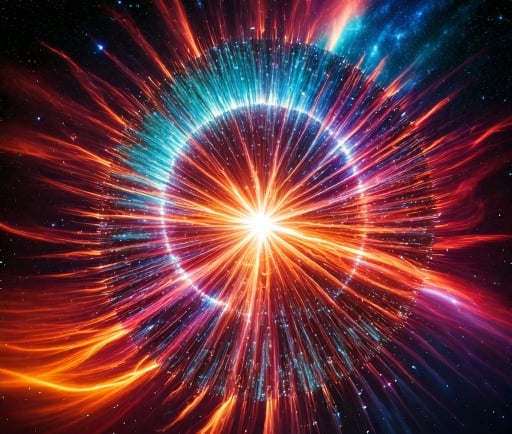The Cosmic Evolution: From the Big Bang to the Formation of Matter


The Beginning of the Universe
The universe, as we understand it today, began with an event known as the Big Bang. This monumental occurrence marked the beginning of space and time approximately 13.8 billion years ago. At this initial stage, the universe was not only microscopic in size, but it was also an incredibly hot and dense point where all forces in physics acted as one. As the universe expanded, space began to stretch and cool, leading to the formation of matter.
The Process of Inflation
One of the most critical aspects of the universe's early development is known as inflation. During this brief period, the universe underwent exponential expansion, increasing in size by a staggering factor. This inflationary phase occurred within a mere fraction of a second after the Big Bang and was instrumental in setting the stage for the formation of subatomic particles. As the rapid expansion of the universe took place, small quantum fluctuations were stretched across vast distances, resulting in varying densities of matter.
The Formation of Protons and Neutrons
As the universe froze, cooling continued to facilitate the combination of elementary particles. Within minutes after the Big Bang, protons and neutrons began to form, leading to the creation of the first atomic nuclei. This process is crucial as it laid the groundwork for the eventual formation of atoms, which would make up stars, galaxies, and ultimately, the structures we see today in the universe.
The formation of these fundamental particles was not instantaneous; instead, it resulted from a delicate balance of forces. As the universe expanded and cooled, conditions became favorable for nuclear fusion, allowing protons and neutrons to collide and bind together. These changes were influenced significantly by the previously mentioned inflationary phase, which set the stage for the matter density fluctuations that determined where regions of higher density would lead to the eventual formation of stars and galaxies.
In conclusion, the history of our universe began with the Big Bang, followed by a period of inflation that played a pivotal role in shaping the cosmic landscape. As the universe expanded and cooled, matter coalesced into protons and neutrons, creating the building blocks of all matter in existence. The journey from a microscopic entity to a diverse cosmos filled with stars and galaxies is a testament to the forces of nature at work, illustrating the delicate balance that has allowed the universe to evolve into what we observe today.
